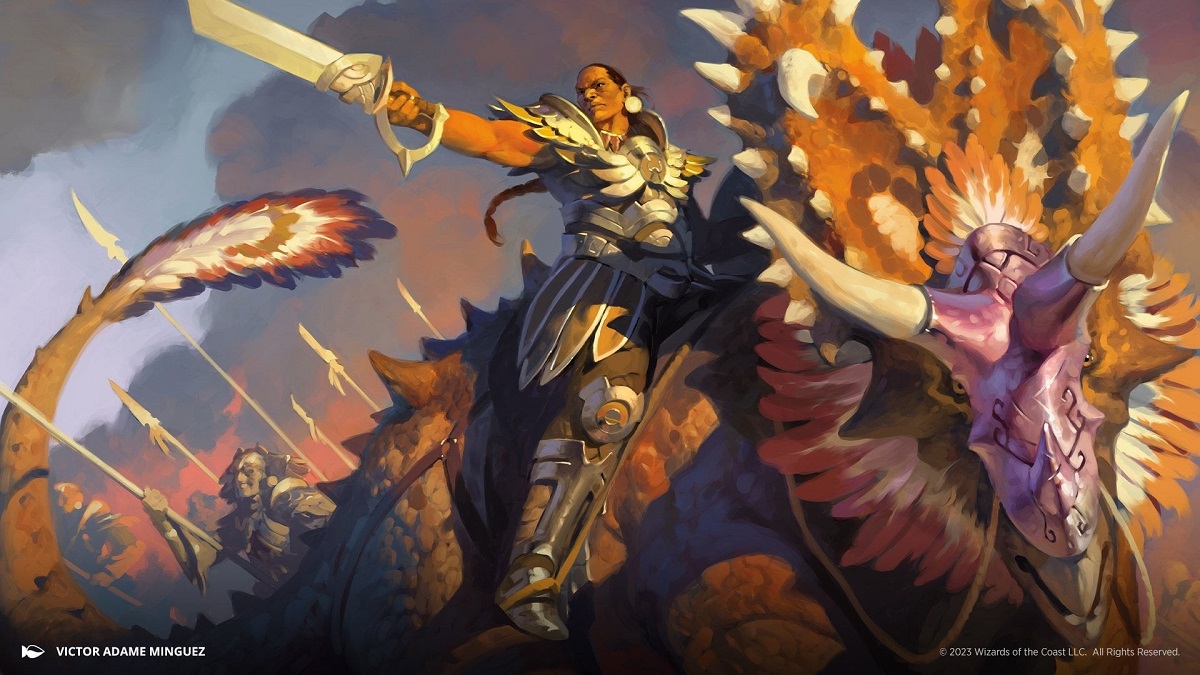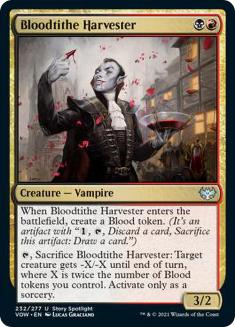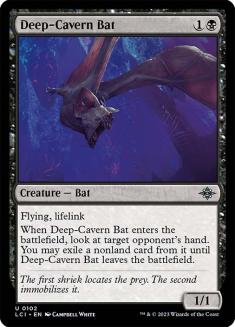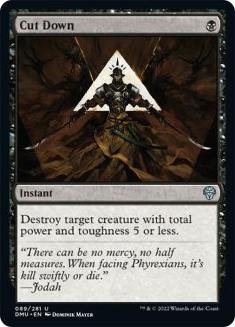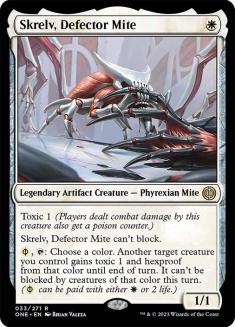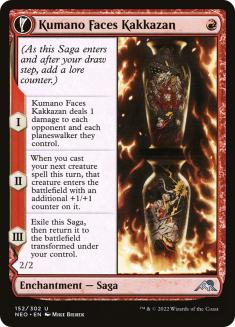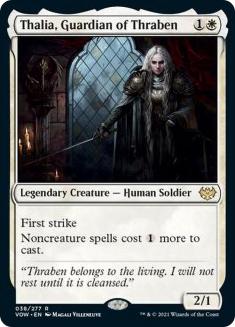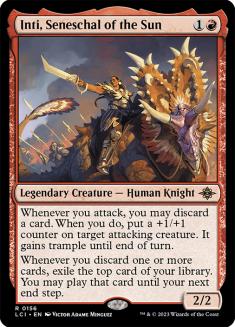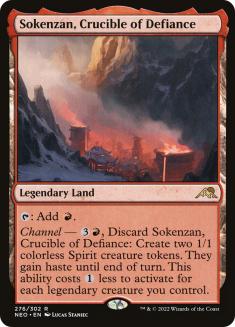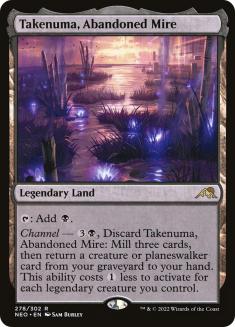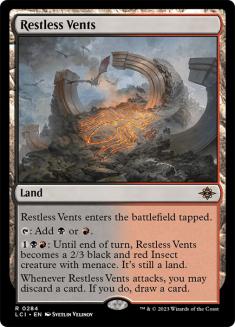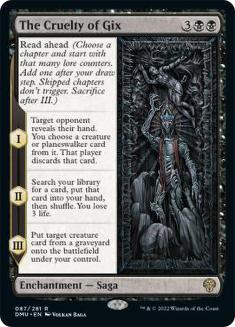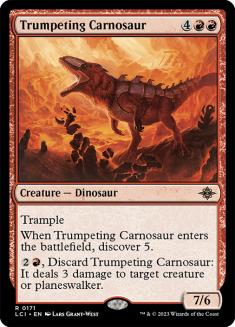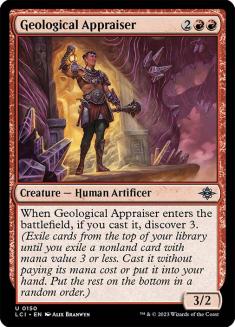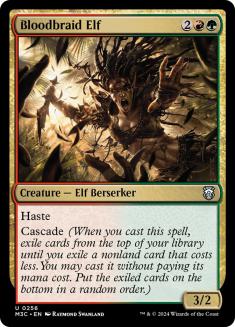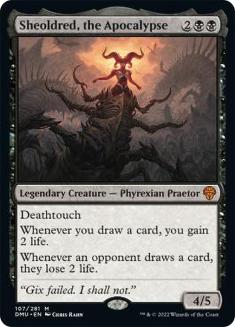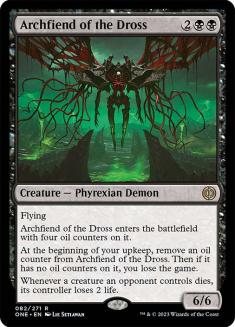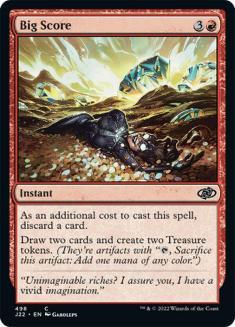How’s your Rakdos matchup?
You’ve asked or heard that a lot if you’ve played any competitive Magic recently. Rakdos Midrange has been the lodestone of Pioneer for years and seems ready to repeat that role at the Pro Tour in a few weeks. Rakdos Evoke ruled Modern with an iron fist until being overthrown – and now it’s back in force!
Defining Rakdos ‘Midrange’ in Standard
The Rakdos Midrange deck that Nathan Steuer used to claim yet another crown at Pro Tour March of the Machine showed just how flexible these terms have to be.
Creatures (9)
Planeswalkers (2)
Lands (26)
Spells (23)

As other Rakdos Midrange players leaned into that label and embraced the deck’s ability to grind, some of Steuer’s teammates described their list as ‘Rakdos Burn’ instead – a Bloodtithe Harvester hit or two and a few Graveyard Trespasser or Sheoldred, the Apocalypse triggers softened the opponent up for a lethal Invoke Despair or Chandra, Hope’s Beacon. Reckoner Bankbuster was your card advantage engine, yes – but its main job was attacking for four on Turn 3!
In another era of Magic, ‘midrange’ was a cruel epithet slapped on your deck when it wasn’t good enough at anything to earn a proper role. The best midrange decks of the past few years have flipped that on its head and challenged the classic archetypes on their own turf, wrestling with aggro in the early-game and grinding out the control decks going long. They still defied categorization, but now that’s a great problem to have!
This new generation of Rakdos decks has to choose a career path early. You can pick a point anywhere on the spectrum from proactive midrange to dedicated ramp or Reanimator, but you do have to declare that in deckbuilding rather than figuring it out in-game.
Small Aggro
Let’s start small.
Creatures (27)
- 4 Bloodtithe Harvester
- 3 Sheoldred, the Apocalypse
- 4 Gix, Yawgmoth Praetor
- 4 Archfiend of the Dross
- 4 Deep-Cavern Bat
- 4 Preacher of the Schism
- 4 Inti, Seneschal of the Sun
Planeswalkers (1)
Lands (26)
Spells (6)

‘Small’ Rakdos will look familiar and reassuring if you have played with or against its Pioneer cousin. This isn’t a traditional aggro deck – we aren’t stretching as far as Kumano Faces Kakkazan or Stalactite Stalker – but it’s the most proactive of these variants, and its low curve is its main selling point.
In last week’s tour of the black midrange decks in Standard, I found that the two-drops were the main point of difference between the secondary colours. Red’s options are a big draw to Rakdos and to this style of Rakdos in particular.
The Bloodtithe Factor
Bloodtithe Harvester is still mourning the loss of Fable of the Mirror-Breaker – as a partner in crime and the perfect target for its brand of removal – but has found a new home here. If you just want a 3/2 to attack early, take your pick – remember Tenacious Underdog? – but the rest of the package matters more.
Deep-Cavern Bat is Standard’s best two-drop and a format-defining card. You need to remove Bat, but it’s hard to feel good about it. You either lean on cards like Cut Down that are helpless against more expensive threats, or must spend a more premium removal spell and two mana intended for your own two-drop just to keep up. Harvester can snipe Bat on demand to unlock your next threat (before it can fall victim to another Bat) and let you keep curving out as intended.
Harvester keeps Cut Down relevant by shrinking larger threats to bring them in range, such as Preacher of the Schism and Sheoldred, the Apocalypse. You don’t want to spend several cards in this way, but it’s better than letting those threats take over the game. If Cut Down is still useless after all this, the Blood token lets you cash it in for a new card.
As players explore the format’s extremes to undercut Domain Ramp, synergistic aggro decks like Bant Toxic have taken online tournaments by storm. Harvester adds a layer of interaction that notably does not trigger Venerated Rotpriest, freeing up your other removal spells.
Meanwhile, Mono-Red Aggro is still everywhere on Arena, and other aggressive decks gain new tools with each set. Harvester lets you hedge against their key creatures with a card you’re keen to play anyway.
The Inti Factor
Inti, Seneschal of the Sun is one of the most exciting two-drops printed in years and is making a name for itself in every format. In Standard, it’s a cornerstone of the Slogurk, the Overslime deck that dazzles people like me, and a strong role-player in aggro decks ranging from Mono-Red to various builds of Humans.
This build of Rakdos can’t curve a one-drop into Inti without resorting to cards like Faerie Dreamthief and isn’t ‘going off’ with it, but still makes good use of all of its talents. The +1/+1 counter is clearly important when you both have the same creature with equal power and toughness – your Deep-Cavern Bat now wins in combat against theirs – but matters more than you’d think in general. Many key creatures in Standard have relatively high toughness and low power, such as Raffine, Scheming Seer, or are sized such that an extra point of both is the difference between trading in combat and not being able to attack or block. Bloodtithe Harvester’s 3/2 is unimpressive, but as a 4/3, it can suddenly saunter into combat against Subterranean Schooner or Preacher of the Schism.
Inti is also excellent with your own Preacher or Sheoldred – trample is a lethal combination with deathtouch, and an extra toughness makes it even harder to block with enough creatures to trade properly.
Blood tokens, Restless Vents, and the Channel lands give you extra value from Inti with no additional effort. Inti encourages a low curve as you want to cast your spells from exile before they disappear but without disrupting your other plans – despite that, I’m happy to play 26 lands with multiple copies of each Channel land and a full set of Vents as extra mana sinks with Inti’s encouragement.
More to the Middle
Inti is the main distinguishing feature of the smaller and more assertive take on Rakdos. Let’s meet some bigger characters.
Creatures (21)
- 4 Bloodtithe Harvester
- 4 Sheoldred, the Apocalypse
- 4 Deep-Cavern Bat
- 1 Aclazotz, Deepest Betrayal
- 4 Preacher of the Schism
- 4 Trumpeting Carnosaur
Planeswalkers (2)
Lands (26)
Spells (11)

Reanimation Spell
The Cruelty of Gix brought reanimation strategies back to Standard for the first time in years, but not for long. As my teammates and I learned the hard way – and then forgot, and had to learn again – a deck built around this angle alone is highly exploitable. Trying to set up a grand flourish with Cruelty into Atraxa or Etali is ambitious when you suffer collateral damage from the tools people are using to fight Domain Ramp.
Cruelty is an ideal end-game for a deck that can contest the early- and mid-game properly – but then what do you bring back?
Reanimation Target
Trumpeting Carnosaur is just what we needed. As a removal spell, it looks uninspiring, but you’re happy for your finisher to have a buyout clause if you’re desperate, and Carnosaur putting itself in the graveyard is exactly what we want here! It fits neatly into Cruelty’s schedule – you can discard it during your draw step just before Cruelty’s third chapter will trigger, so you can spend your mana as you like on previous turns without worrying about missing a chance to get your big creature in the right zone. Once you bring back Carnosaur (or just cast it manually, which is realistic for a six-drop in the right colours), you’re thrilled if you discover another Cruelty. You can set up a Cruelty chain where Chapter II finds another Cruelty and Chapter III brings back Carnosaur, with the same play lined up if they survive that wave.
The beauty of this approach is that it’s also the ideal way to fight Domain Ramp. Setting up Cruelty for your own Atraxa is too much work, but how about stealing theirs and taking it for yourself? Cruelty used to appear in some Domain sideboards as a mirror-breaker for this purpose, and you get to play a full set in your maindeck. My ‘small’ Rakdos list has a Cruelty + Liliana of the Veil sideboard plan against Domain, recognizing that if you can’t apply enough pressure, you have to go bigger.
I do have some questions about the stock lists, though…
Reappraisal
Geological Appraiser is a perfect example of how information trickles through the Standard metagame today. After it showed up in the earliest Rakdos lists, built and piloted by strong Magic Online (MTGO) players trying the new cards, some of those card choices became frozen into each successive wave of decklists. People saw that early success and decided to copy those lists rather than rebuilding the whole thing themselves; some of those people did well, which meant that even more lists like these showed up when next week’s cohort of players who felt like dabbling in Standard started looking for lists to use. Stock Rakdos has 4 Geological Appraiser because stock Rakdos last week had 4 Geological Appraiser.
This isn’t Pioneer, where Appraiser briefly won the game on the spot (but notably failed to show up in a similar context in any Rakdos Midrange lists), and it takes just a few games to see that Appraiser is no Bloodbraid Elf. When Jund Midrange dominated Standard nearly fifteen years ago on the back of Bloodbraid Elf, there were few alternatives and it boasted the unique strength of keeping planeswalkers like Jace, the Mind Sculptor in check. Haste let you press your advantage if you hit big on cascade and at least had a source of pressure if you whiffed. Appraiser lacks all of that – and the competition is much stronger now.
The Four-Drops
The Standard card pool contains two black four-drops so strong that they are the default options for Rakdos Midrange in Pioneer too. Less aggressive lists can’t embrace Archfiend of the Dross so easily, but running any copies of Appraiser before maxing out on Sheoldred is deckbuilding malpractice. The Golgari and Dimir/Esper decks featured last week aren’t looking over in envy at these Appraisers – they are wondering why their rival isn’t just playing the proven, broken card instead!
Appraiser is especially embarrassing in a list leaning on The Cruelty of Gix. You won’t always have a Carnosaur to bring back or a creature to rob from their graveyard, so it’s important that your cheaper threats are worthy targets if it comes to that. Sheoldred absolutely qualifies. A 3/2 that won’t even discover does not!
If reanimating Dinosaurs is your idea of a good time, Standard has an even bigger thrill for you:
Rakdos Ramp
Creatures (11)
Lands (27)
Spells (22)

Rakdos Ramp (affectionately known as ‘biiiiiiiiig Rakdos‘) goes over the top of everything. The best way to understand a Standard deck is to ask how it plans to beat Domain. For these smaller approaches, you have to pair your relatively light pressure with some well-timed disruption and hope that gets you there. Generic Rakdos lines up well against other black midrange decks and some of the creature decks, but hopes to avoid Leyline Binding and Herd Migration.
This deck welcomes that fight and takes the weird symmetry of The Cruelty of Gix even further – you win any arms race because Etali, Primal Conqueror and Breach the Multiverse let you turn their ways of going bigger to your advantage. The only hope is to punish Rakdos Ramp’s inherent clunkiness and end the game before then. Some of the Dimir and Esper decks in the format can do that quite easily, but other ramp decks will struggle.
The issue here is structural. Big Score is the bridge to your seven-drops, but even that requires more mana and resources than you can safely guarantee and is risky in a format full of Make Disappear and Faerie Mastermind. You need enough removal to survive the early turns and enough payoffs to make this all worth it, but you need the right mix in the right order – and the lands to cast them. This deck will lose its good matchups more than it ‘should’ because many of its draws will be nonfunctional.
Fable of the Mirror-Breaker was the mortar that filled these gaps in the past, and there’s no obvious replacement. Gerry Thompson keeps reminding us that Treasure Map exists and that it shines in decks like this, but that only goes so far.
Which Rakdos?
These decks are different enough that it almost doesn’t make sense to compare them (any more than you would compare Rakdos Midrange and Domain Ramp, for example). In practice, the most natural way to arrive at one of these decks is switching from another. When should you do that?
Rakdos Ramp makes sense if you want to target Domain Ramp above all. It also embodies the old adage that the best way to win a midrange mirror is to go bigger. If you expect other Rakdos decks or the occasional Golgari deck, Rakdos Ramp holds the trump card.
At the other extreme, the small Rakdos deck headlined by Inti is the ideal exploit for the anti-Domain decks that are trying to go under it rather than over it. Against Bant Toxic or the sleeker lists of Dimir Midrange, keeping it lean is the way to go.
In between, the midrange list with the Cruelty + Carnosaur package at the top is the most solid and unexploitable. If you don’t have a firm read on your local metagame, this is a safe and strong default.

